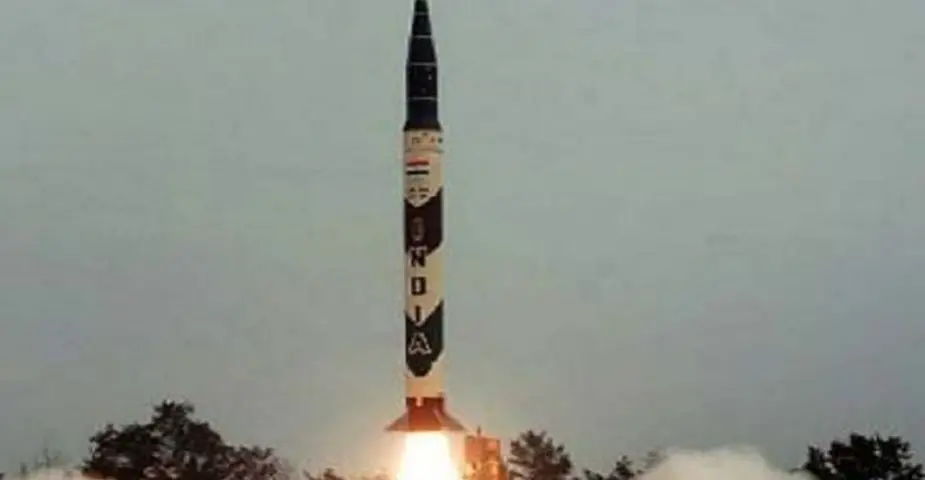India’s Strategic Forces Command (SFC) has successfully test-fired a nuclear-capable Agni-I ballistic missile, local media reported on 30 October. The missile, launched from a test range off the coast of the eastern state of Odisha as part of regular training activities, hit the target area with accuracy, according to The Times of India newspaper.

Test-fire of Agni-1 ballistic missile (Picture source: CityToday.news)
Agni-I (Agni means "Fire") is a short-range ballistic missile developed by DRDO under the Integrated Guided Missile Development Program. It is a single-stage missile developed to fill the gap between 250 km range of Prithvi-II and 2,500 km range of Agni-II. It was first launched on 25 January 2002 from a road mobile launcher at Integrated Test Range (ITR), Wheeler Island. Less than 75 launchers are deployed.
Agni-I was first tested at the Interim Test Range in Chandipur in 1989. The Agni I has a range of 700–900 km. It is claimed to be a part of the "Minimum credible deterrence". Agni-I is a single stage, solid fuel, road and rail mobile, short-range ballistic missile (SRBM). The need for the Agni-I was felt after the Kargil war with Pakistan. It took DRDO 15 months to develop the Agni-I after having completed Agni-II development.
It is propelled by solid fuel. Maneuvering RV body-lift aerodynamics give it the ability to correct trajectory errors and reduce thermal stresses. The MRV has a velocity correction package to correct launch trajectory variances. Some Agni RV versions use a set of solid fueled thruster cartridges of predetermined impulse, allowing the onboard guidance controller to trim velocity, using discrete combination of impulse quanta along the desired spatial orientation. The 15-metre tall Agni-1 missile, weighing about 12 tonnes, is capable of carrying both conventional as well as nuclear warheads of 1,000 kg.















